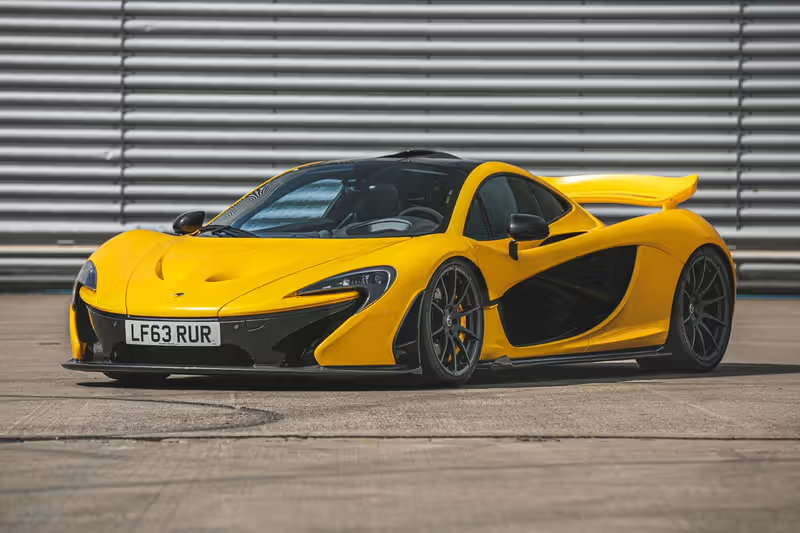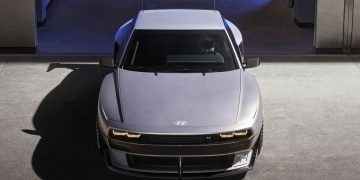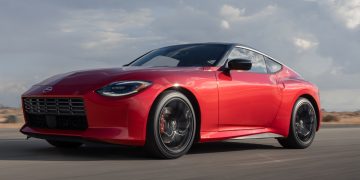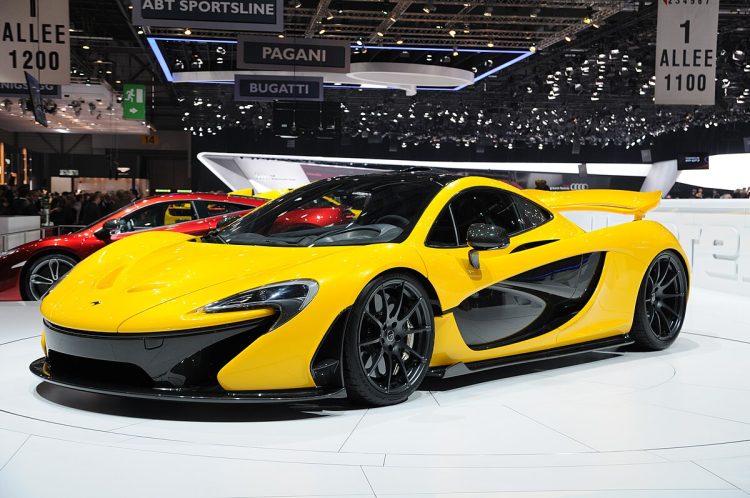Introduction: McLaren’s Legacy of Performance, Innovation, and Engineering Excellence
When it comes to the world of supercars, few names resonate as powerfully as McLaren. A brand synonymous with cutting-edge technology, engineering brilliance, and racing pedigree, McLaren has long been a pioneer in the world of high-performance cars. Since its inception in 1963 by Bruce McLaren, the company has been at the forefront of motorsport innovation and has seamlessly translated its racing expertise into a legacy of extraordinary road cars.
Today, McLaren is recognized as one of the world’s most prestigious manufacturers of luxury performance cars. From the iconic McLaren F1 to the latest models like the McLaren Artura and McLaren Sabre, the brand has continually pushed the boundaries of what’s possible in automotive engineering. But McLaren’s influence extends far beyond the cars themselves. The company’s emphasis on lightweight construction, aerodynamic design, and hybrid technologies has redefined the supercar industry, shaping not just how cars are built but how they perform, feel, and connect with the driver.
In this article, we will explore how McLaren has transformed the supercar industry and shaped automotive innovation. From its early racing days to its modern-day creations, McLaren has consistently set new standards in automotive performance, design, and sustainability. This article will delve into McLaren’s engineering excellence, its role in motorsports, and its groundbreaking use of materials and technologies that have elevated the supercar segment to new heights.
1. McLaren’s Early Years: Racing Origins and the Birth of a Supercar Legacy
The Birth of McLaren Racing: Bruce McLaren’s Vision
McLaren’s story begins not with a road car, but with the Formula 1 racetrack. The company’s founder, Bruce McLaren, was an accomplished race driver and engineer who founded Bruce McLaren Motor Racing in 1963. His vision was to build cars that combined lightweight design, aerodynamic efficiency, and cutting-edge engineering to push the limits of performance in the high-stakes world of motorsports.
Bruce McLaren’s involvement in Formula 1 led to the creation of some of the most successful and innovative race cars of the era. McLaren’s early racing efforts quickly became a force to be reckoned with, and by 1968, McLaren had achieved success in the Formula 1 World Championship, winning races with his own cars and establishing a reputation for engineering excellence and performance innovation.
Bruce McLaren’s legacy extends beyond his racing achievements—he also instilled a spirit of innovation and engineering prowess that continues to define the company today. His vision of pushing the boundaries of what was possible on the racetrack laid the foundation for McLaren’s eventual success in the road car market.
The McLaren F1: A Road Car Revolution
McLaren’s foray into road cars began with the development of the McLaren F1, a car that would go on to become one of the most influential and iconic vehicles in automotive history. Launched in 1992, the F1 was a ground-breaking supercar that combined extreme performance with luxury and innovative design.
The F1 was powered by a naturally aspirated 6.1-liter V12 engine developed in partnership with BMW, producing a staggering 627 horsepower. It was the first road car to break the F1 speed record, reaching a top speed of 243 mph, a record it held for over a decade. The car’s construction was revolutionary for its time, featuring carbon fiber monocoque construction, making it both incredibly lightweight and incredibly strong.
The F1’s design was also ahead of its time. It featured a center-mounted driver seat, a layout that would become synonymous with McLaren’s approach to driver-centric engineering. The F1’s unique design, paired with its blistering performance, set a new standard for what a road car could achieve and solidified McLaren’s position as a manufacturer of high-performance vehicles.
While only 106 McLaren F1s were ever built, the car’s legacy lives on as the benchmark for performance and engineering innovation. The F1 remains one of the most coveted supercars in the world and paved the way for the future of McLaren’s road car division.
2. McLaren’s Modern Lineup: A Fusion of Racing Heritage and Road Car Performance
McLaren 12C and the Rise of the Super Series
After the F1, McLaren took a brief break from producing road cars before launching the McLaren MP4-12C in 2011. The 12C marked the company’s return to the supercar market and was the first production car to use McLaren’s carbon-fiber MonoCell chassis. This advanced chassis, inspired by McLaren’s Formula 1 cars, allowed the 12C to achieve an extraordinary power-to-weight ratio and set a new benchmark for supercar performance.
The MP4-12C was powered by a 3.8-liter twin-turbo V8 engine, producing 592 horsepower and enabling a top speed of 205 mph. The car’s design and engineering focused on achieving a perfect balance of speed, handling, and comfort, something that set it apart from competitors like Ferrari and Lamborghini. The MP4-12C was the first step in McLaren’s pursuit of creating a complete range of high-performance supercars that would define the next era of the brand.
The success of the MP4-12C was followed by the launch of the McLaren 650S in 2014, a more powerful and refined version of the 12C. With a 3.8-liter twin-turbo V8 engine producing 650 horsepower, the 650S boasted performance figures that rivaled the best in the world, including 0 to 60 mph in 3.0 seconds and a top speed of 207 mph.
The 650S cemented McLaren’s position as a serious contender in the world of supercars, offering a driving experience that blended blistering performance with comfort and technology. The model’s introduction led to the expansion of McLaren’s product line into the Super Series, with cars like the McLaren 720S and McLaren 765LT becoming staples in the world of high-performance vehicles.
McLaren P1: The Hypercar Revolution
The McLaren P1, introduced in 2013, was another groundbreaking moment in the company’s history. As McLaren’s first hypercar, the P1 took performance and technology to an entirely new level. The P1 combined a 3.8-liter twin-turbocharged V8 with an electric motor, producing a combined 903 horsepower. This hybrid powertrain allowed the P1 to achieve incredible acceleration and top speeds while reducing its environmental footprint.
The P1 was not just about raw speed—it was also a technological showcase. The car featured an advanced aerodynamic system that automatically adjusted the car’s bodywork to optimize performance at high speeds. The P1’s carbon-fiber monocoque chassis and lightweight design made it an incredible performer on both the track and the street.
The McLaren P1 was not just a technological marvel but also a statement of McLaren’s vision for the future of high-performance cars. Its focus on hybridization, aerodynamics, and lightweight construction paved the way for a new generation of hypercars that would dominate the automotive world.
The McLaren Artura: Entering the Hybrid Era
In 2021, McLaren entered the next phase of its evolution with the launch of the McLaren Artura, its first series production hybrid supercar. Powered by a 3.0-liter twin-turbo V6 paired with an electric motor, the Artura delivers a combined 671 horsepower and 531 lb-ft of torque. The Artura’s hybrid system allows it to achieve zero to 60 mph in 3.0 seconds, combining blistering acceleration with efficiency and reduced emissions.
The Artura represents McLaren’s shift towards sustainable performance. The car’s carbon-fiber chassis and lightweight design ensure that it maintains McLaren’s commitment to performance, while the hybrid powertrain signals the company’s intention to lead the way in the world of eco-conscious performance cars.
The Artura is part of McLaren’s Track25 business plan, which outlines the company’s commitment to having half of its lineup be hybrid by 2025. As McLaren continues to innovate and push the boundaries of what’s possible, the Artura will be a cornerstone in the company’s evolution toward a more sustainable future.

3. McLaren’s Engineering Innovations: Pioneering the Future of Supercars
Lightweight Construction: The McLaren Carbon Fiber Monocoque
One of the key factors that sets McLaren apart from other supercar manufacturers is its unwavering commitment to lightweight construction. McLaren’s use of carbon fiber monocoque technology has been a game-changer for the automotive industry. This technique, which McLaren first perfected in Formula 1, allows the company to create vehicles that are both incredibly strong and incredibly lightweight.
The use of carbon fiber in McLaren cars is not just about performance—it also enhances safety, efficiency, and driving dynamics. The lightweight design ensures that McLaren vehicles are agile and responsive, able to achieve unmatched handling and acceleration. This commitment to lightweight engineering has become a defining feature of McLaren’s approach to high-performance cars.
Hybrid and Electric Technologies: Leading the Way
In addition to lightweight construction, McLaren has been a leader in the use of hybrid and electric technologies in performance cars. The McLaren P1 was a groundbreaking hybrid vehicle, combining electrification with raw performance. The McLaren Artura continues this trend, showcasing McLaren’s ability to combine electric motors with V8 and V6 engines to create vehicles that offer the best of both worlds—impressive performance and improved fuel efficiency.
McLaren’s focus on sustainability has led to the development of some of the most innovative hybrid technologies in the automotive world. The company’s future plans involve increasing the number of hybrid and electric models, making it a key player in the evolution of the green supercar segment.
4. McLaren’s Impact on the Automotive Industry and the Supercar World
Raising the Bar for Supercars
McLaren has played a pivotal role in redefining what a supercar can be. The company’s focus on performance, innovation, and luxury has raised the bar for the entire industry. McLaren’s engineering excellence has pushed competitors to innovate and improve, ensuring that the entire supercar market continues to evolve and progress.
The company’s dedication to lightweight materials, advanced aerodynamics, and cutting-edge technologies has made McLaren a leader in the supercar segment, and its influence can be seen in the designs and engineering of other manufacturers.
Inspiring a New Generation of Car Enthusiasts
Beyond its cars, McLaren has inspired a new generation of car enthusiasts, drivers, and collectors. The brand’s focus on innovation, performance, and driver experience has made McLaren cars some of the most sought-after machines in the world. Whether it’s the McLaren F1 or the McLaren 765LT, these cars have captured the imaginations of car enthusiasts and collectors, turning McLaren into a symbol of luxury, performance, and engineering excellence.
Conclusion: McLaren’s Continuing Evolution and Future Influence
As McLaren continues to innovate and refine its designs, the company will undoubtedly remain a force to be reckoned with in the world of high-performance supercars. The introduction of models like the Artura, combined with its ongoing commitment to sustainability, hybridization, and lightweight construction, ensures that McLaren’s influence will only continue to grow in the coming years.
Through its engineering excellence, pioneering technologies, and commitment to performance, McLaren has not just transformed the supercar industry—it has redefined what a supercar can be. As the company moves forward, it will undoubtedly continue to push the boundaries of automotive technology, creating vehicles that are faster, more efficient, and more exhilarating than ever before.


































Discussion about this post